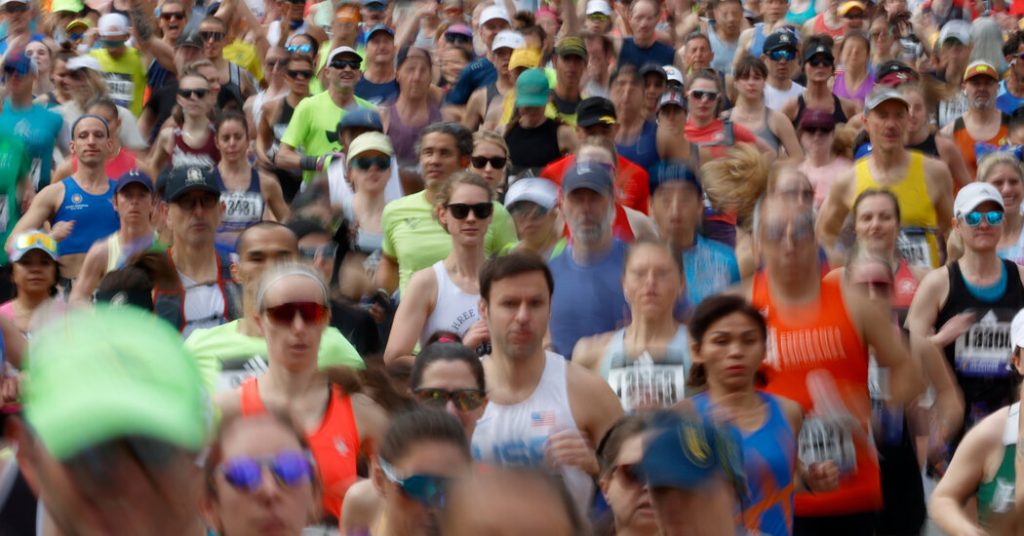In April 1924, around 140 men lined up in Hopkinton, Mass., for the Boston Marathon, which was now 26.2 miles long. A century later, the marathon has become incredibly popular, with about 30,000 runners participating. Distance running has exploded in popularity over the past few decades, with many runners being middle-aged or older, less fit, and less experienced. This has led to a considerable slowdown in the average finish time for American marathons, even as top runners continue to get faster. The Boston Marathon, the oldest annual marathon in the world, requires most runners to submit a qualifying time for entry, resulting in a particularly fast field.
Despite its prestige, the Boston Marathon has also seen a rise in average finish times over the years. In 1924, the average finish time was under three hours, but now it is nearly four hours. As distance running gained popularity as a way to stay healthy, more people wanted to compete in marathons. Major marathons like New York City’s and Chicago’s were established to meet this demand. The Boston Marathon expanded to accommodate more runners, and rules were relaxed to allow for a wider range of participants, from fanatics to the everyman.
Major marathon organizers aim to attract large field sizes due to the high costs associated with hosting such events. Runners’ registration fees help cover the cost of shutting down streets, providing security, and setting up infrastructure along the course. Additionally, the prestige of hosting a large public event, with thousands of runners and spectators, contributes to the appeal of these marathons. While Boston requires a qualifying time for entry, many other marathons, like Honolulu’s, are less strict about entrants’ credentials, allowing for a diverse range of participants.
Although average finish times in marathons have slowed down, marathon winners continue to achieve impressive speeds. Boston’s course records for both men and women have been set in the last 15 years, and world records are still being broken on American marathon courses. In the Chicago Marathon, Kelvin Kiptum broke the world marathon record, finishing with a time of 2 hours 35 seconds. Despite the varying skill levels of participants, everyone runs the same course on the same day, making marathons a unique opportunity for people of all backgrounds and abilities to challenge themselves and achieve their goals.
As popular as marathons have become, with events like the Boston Marathon attracting thousands of participants, there is still a sense of community and support among runners. Regardless of finish times and skill levels, the shared experience of running a marathon, from the first runner to the last, creates a bond among participants. For many, running a marathon is about more than just hitting a goal time; it’s about the journey, the challenge, and the camaraderie. With marathons continuing to grow in popularity and diversity, they offer a unique opportunity for people to push themselves, connect with others, and achieve personal milestones.


